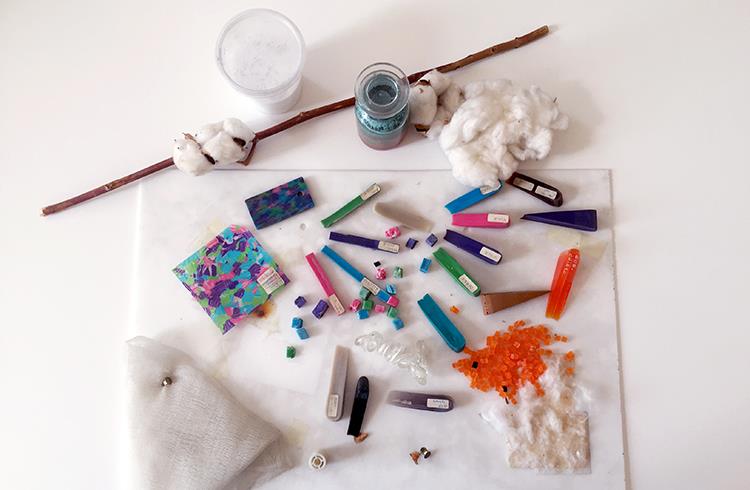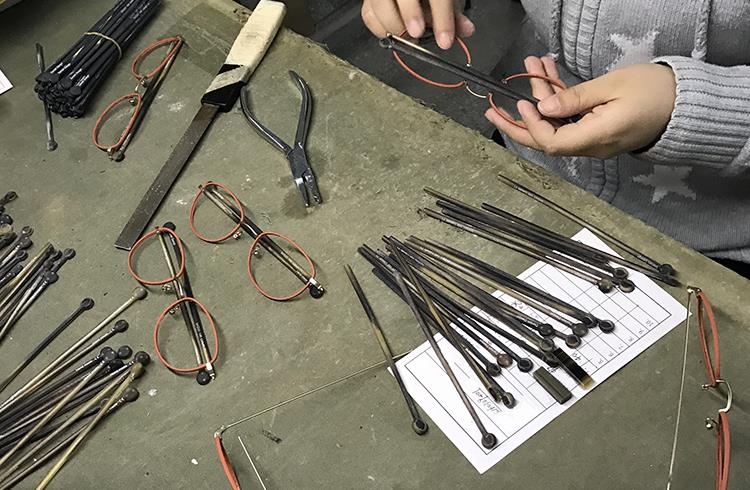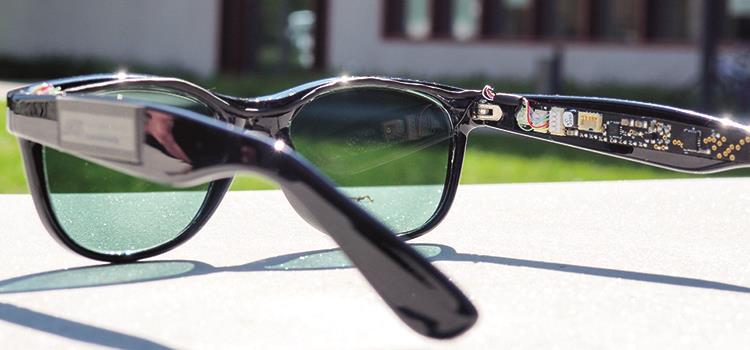Luxottica
At its 12 manufacturing sites around the world, Luxottica, the world’s largest eyewear manufacturer, produces approximately 95m frames every year.
The commitment to protecting the environment comes from the bonds with the communities where it operates, the company says. Its very first factory in Agordo sits within the national park of the Belluno Dolomites and provides the inspiration to make a fundamental contribution to be a more environmentally responsible company.
Luxottica’s approach to green operations is based on the policies of the European Union and the United Nations, with environmental protection an essential element of every part of the process. The remit is vast, with considerations needed in several different businesses and territories. The entire value train of the company’s business has become more sustainable, including water and energy consumption, CO2 emissions, along with the production and subsequent recycling of waste materials.
The first results of a more intensive approach to the environment came during the early 2000s, when the company began to implement a number of projects at manufacturing level, including the installation of special filters to cut down on dust and volatile solvents and the use of varnishing technology with reduced environmental impact.
Nearly 10 years later, an environmental impact monitoring system was established to watch over CO2 use, water consumption and electricity use. This began at the six production plants in Italy, but was gradually rolled out to plants in China, Brazil, the US, distribution and the network of some 8,000 shops.
In 2011 the company adopted the UNI ISO 14001 Environmental Management System in all its facilities and offices in Italy, covering a total of six manufacturing facilities, a distribution hub and the Milan headquarters. It also was the first Italian company to obtain the ISO 50001 certification for its energy management system in Agordo.
In recent years, the company has worked on replacing the conventional lighting systems in its Italian and Chinese factories, improving heat recovery and air conditioning systems and replacing production machinery with high energy consumption. At Italian facilities alone, it reduced electrical energy consumption by 1,085,886 Kwh during 2016, which roughly equates to the annual energy use of 236 houses in the UK.
For all the company’s efforts in reducing energy use, there are external factors that hamper the ability to save energy. Last year’s trend for metal sunglasses and ophthalmic frames saw energy use increase sharply, as the number of production stages was greater than those for acetate and injection moulding. In addition, the production of metal frames was concreted on Agardo, the largest and most energy intensive.
The impact of the metal trend was also felt in C02 emissions. A year-on-year trend for reducing emissions was bucked, with CO2 levels of over 40,000 tons caused by the need to alter the production mix.
Galvanisation is a key step in the production process for Luxottica. The process coats metal surfaces and components with thin layers of higher grade metals such as ruthenium and gold, adding aesthetic improvement and protection.
Before improvements were made in 2014 at the company’s Tristar plant in China, a lot of water was used during the process – roughly the size of an Olympic swimming pool every single day, says Luxottica. On top of water usage, was energy to heat the tanks, ventilation and a process to discharge metal waste.
The new technique was specially adapted by Luxottica for eyewear production. An integrated water treatment and recycling system was used to turn the three phases, washing, nickel-plating and finishing into a single process. The addition of a purification plant allows the water to be reused in the process and in the heating of the tanks through cogeneration.
Previously, heating coils were used to heat the tanks to 65˚ centigrade, but these have now been replaced with heat exchanger coils containing hot water from the cogeneration plant used to heat the facility in winter. In just one year, Luxottica said water consumption was reduced by 90% and atmospheric emissions cut by approximately 60%.
Mazzucchelli
Acetate is one of those materials that, despite age, technical developments and trends for other materials, maintains a certain charming feel and look that makes it nigh-on irreplaceable.
Cellulose acetate continues to dominate in the eyewear industry thanks to unbeatable aesthetic qualities as for colour depth, optical effects and tactile feeling. Already derived from renewable resources, cotton or wood pulp, it is fair to say that improving acetate’s environmentally friendly credentials was not high on the agenda for any of its producers. Developments in bio-plastics and the world’s focus on being green changed that.

Mazzucchelli was the first to bring biodegradable acetate to market
The removal of traditional plasticisers and pigments and subsequent replacement with organic alternatives was the main challenge, with questions lingering over the ability of the organic substitutes to recreate the look and feel of the traditional materials.
Mazzucchelli was the first to bring a biodegradable acetate to market in 2012 with the launch of its M49 material. Besides being made from renewable resources, the new plastic met the ISO 14855 standard for aerobic biodegradability with 115 days.
Another hurdle the company had to negotiate was making sure that M49 met ISO 177-2001 for plasticiser migration, which can occur when two plastics are in contact and was especially important in an eyewear setting when using polycarbonate lenses.
The first eyewear brand to use the new acetate was Gucci, but the others have since followed.
Monkeyglasses
Danish brand Monkeyglasses has sustainability at its very heart and is one of many to use the M49 range of acetate from Mazzucchelli among its collections.
But eco-friendly materials are just part of the picture for the company, which operates a ‘closed loop’ product life cycle to ensure every stage is as sustainable as it can be and that suppliers comply with the UN Global Compact guidelines on corporate social responsibility.

Monkeyglass uses the same M49 acetate Mazzucchelli pioneered
The company was born out of a philosophy to look good while doing good and serves a new type of ‘conscious consumer’ who is looking for genuine sustainability in their products. Zero waste is a particular focus and most of all waste material from manufacturing frames, are given a second chance as ear rings, bracelets and rings. Even the spectacle cases and polish cloths are made from recycled paper and old plastic bottles.
A careful eye on each step of the production process keeps the company’s carbon footprint as low as possible and because the frames are made by hand, working conditions are also carefully assessed. The company says just 266g of C02 is created when making a single frame.
Along with the M49 acetate, the materials Monkeyglasses uses are selected on their green properties. Its latest collection, Balance, features frames made with stainless steel which is 100% recyclable material. The new range also includes a selection of black frames made from 100% recycled acetate sourced from the waste material made when creating an initial frame. Much like Henry Ford’s Model Ts, the recycled frames are currently only available in black because the texture within the acetate is hard to perfect when using other hues. Even secondary materials, such as leather embellishments, are sustainable and are fully certified.
Away from eyewear, the company donates to the Save the Orangutan foundation and sponsors female orangutan, Kita. It encourages its customers to do the same.
Karlsruhe Institute of Technology
The role eyewear can play in the tech revolution has been well-explored, with varying degrees of success. Researchers at Karlsruhe Institute of Technology (KIT) are the latest to join the fray by using sunglass frames to house coloured, semi-transparent solar cells that are capable of generating energy.

Solar-powered smart glassess
The prototype sunglass sees the coloured solar cells applied to the exterior of the temples, supplying a microprocessor as well as two small displays with electric power. The glasses were developed by a team led by Dr Alexander Colsmann, who serves as the head of organic photovoltaics group at the university’s Light Technology Institute.
The smart solar glasses are self-powered to measure and display the solar illumination intensity and ambient temperature. The solar cell lenses have a thickness of around 1.6mm and have the aesthetic benefit of being able to be made in almost any colour. The microprocessor, and two displays are integrated into the upper section of the frame.
Researchers hoped the prototype could become the basis of future solar-powered mobile applications and could operate devices like hearing aids and fitness trackers.
